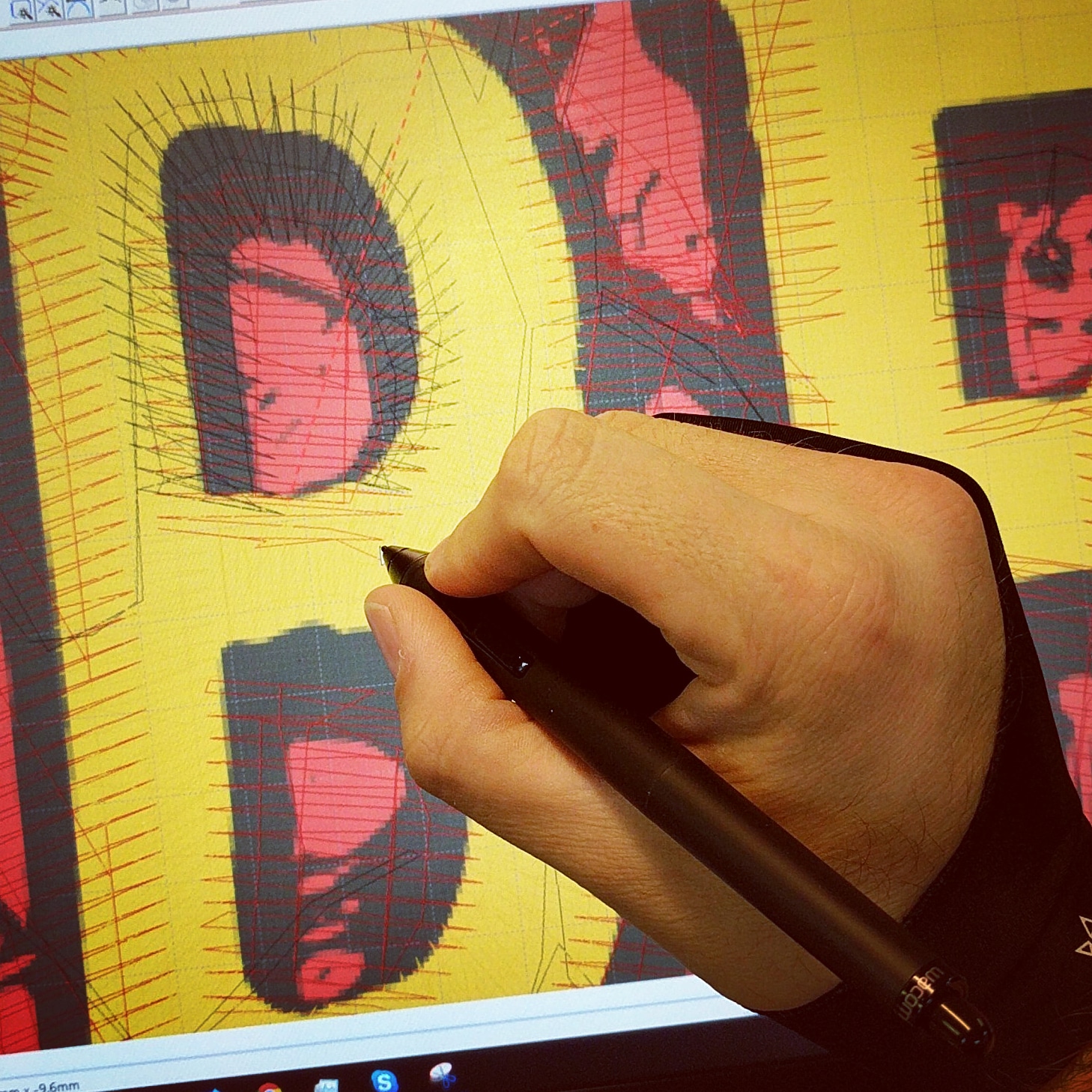Understanding the Embroidery Digitizing Process: Your Ultimate Overview
Needlework digitizing is a meticulous craft that calls for accuracy and know-how to translate detailed layouts right into electronic formats for equipment needlework. As craftsmens get started on this trip to grasp the embroidery digitizing process, an extensive understanding of the basics sets the foundation for excellence.

Understanding Needlework Digitizing Basics
Needlework digitizing essentials form the foundation upon which intricate layouts are equated into machine-readable styles for exact sewing. This first action in the needlework digitizing procedure is critical for making sure that the final stitched item is a faithful representation of the initial layout. Comprehending embroidery digitizing basics entails grasping key principles such as stitch types, sew direction, density, underlay, and pull payment.
Sew kinds play a vital duty in figuring out the aesthetic and textural result of the stitched design. By selecting the suitable stitch kind, whether it be satin, fill, or running stitch, digitizers can accomplish the preferred impact and enhance the overall high quality of the needlework. Furthermore, stitch direction affects the circulation and dimension of the style, while thickness figures out the spacing and insurance coverage of the stitches.
Moreover, underlay stitching offers security to the style by protecting the material and preventing distortion throughout the embroidery procedure. Pull compensation is an additional essential consideration to neutralize the natural propensity of material to agreement when stitched. Mastering these needlework digitizing basics is fundamental for creating professional-quality embroidered products.
Choosing the Right Digitizing Software Program
Selecting the ideal digitizing software application is an important decision that substantially impacts the efficiency and quality of the needlework digitizing process. Digitizing for Embroidery. When choosing the ideal digitizing software application, it is important to take into consideration factors such as the complexity of styles you prepare to develop, the user-friendliness of the software application, the degree of client assistance provided, and the compatibility with your needlework machine
There are various digitizing software alternatives available on the market, varying from fundamental programs for beginners to innovative software application for professional digitizers. Some prominent choices consist of Wilcom EmbroideryStudio, Hatch Needlework Software Application, and PulseID. These software provide a wide variety of devices and attributes to aid you create elaborate designs effortlessly.
Before making a choice, it is suggested to explore the different software program options with cost-free tests or trials to identify which one finest matches your needs. Additionally, checking out testimonials and looking for recommendations from skilled digitizers can supply beneficial understandings into the toughness and weak points of each software program package (Digitizing for Embroidery). By carefully assessing your demands and contrasting the functions of different digitizing software, you can make an informed option that enhances your embroidery digitizing workflow
Digitizing Tools and Techniques

Optimizing Design Setup for Needlework
Understanding the ins and outs of style setups is fundamental in attaining ideal lead to the embroidery digitizing process, structure upon the foundation laid by understanding digitizing devices and learn the facts here now techniques. When maximizing layout setups for embroidery, it is vital to consider aspects such as stitch type, density, underlay, draw settlement, and enrollment. Sew kind selection affects the general look of the layout, with alternatives like satin, fill, and running stitches offering different appearances and effects. Thickness describes the spacing and thickness of stitches, affecting the layout's protection and longevity. Proper rug sewing gives stability and prevents textile distortion, especially for complex layouts or on stretchy products. Pull settlement adjusts for textile stretch during stitching, making sure precise layout duplication. Registration settings straighten various components of the layout properly, maintaining general design honesty. By fine-tuning these style setups, embroiderers can improve the high quality and accuracy of their stitched creations.

Troubleshooting Common Digitizing Issues
When experiencing typical digitizing concerns throughout the needlework process, it is vital to comprehend the origin and carry out effective remedies quickly. One typical problem is stitch thickness problems, where stitches browse around this site might be as well thick, causing the material to pucker, or also thin, resulting in spaces in the style. Adjusting the stitch thickness setups in the digitizing software application can aid solve this problem.
One more frequent challenge is thread breaks during the embroidery procedure. This can happen because of different reasons such as inaccurate stress settings, plain needles, or using low-grade string. Making sure proper maintenance of the embroidery device, including regular needle adjustments and tension changes, can lessen the incident of thread breaks.
In addition, layout enrollment mistakes can lead to misaligned aspects within the embroidery design. Inspecting the style alignment in the digitizing software and making needed changes prior to sewing can assist in avoiding this problem. By resolving these usual digitizing problems immediately and successfully, you can make certain a smoother embroidery procedure and premium finished items.
Verdict
Finally, grasping the embroidery digitizing procedure needs a strong understanding of the basics, the appropriate option of software, and expertise of devices and techniques. Enhancing style setups and fixing typical digitizing issues are crucial action in guaranteeing premium needlework outcomes. By complying with these steps faithfully, one can accomplish precision and performance in the digitizing procedure.